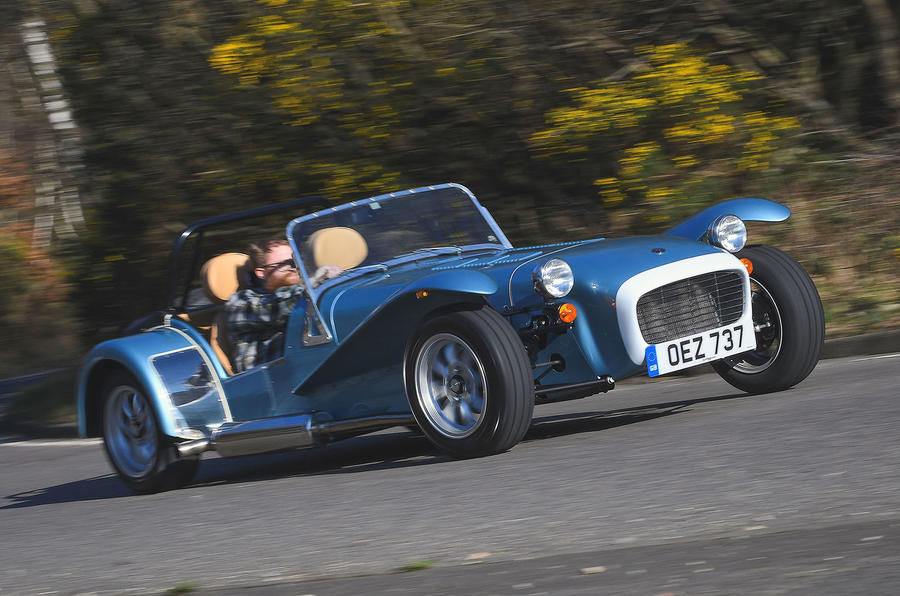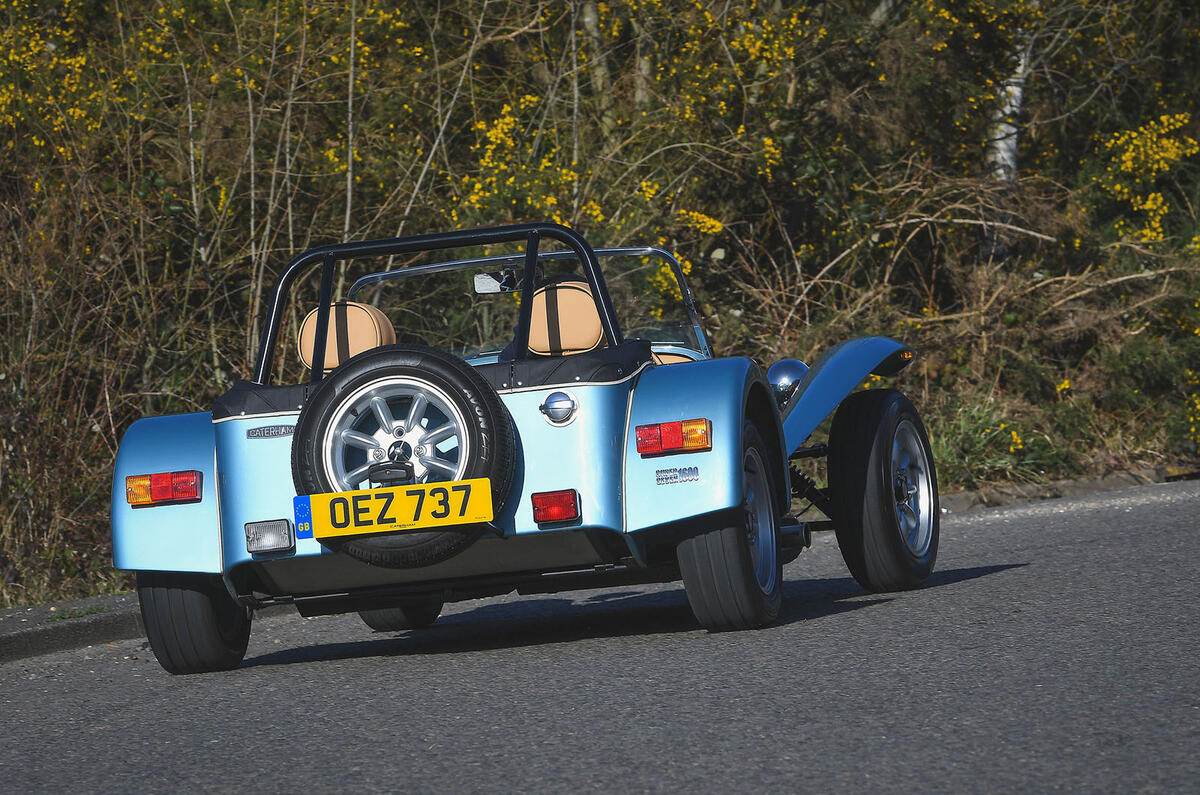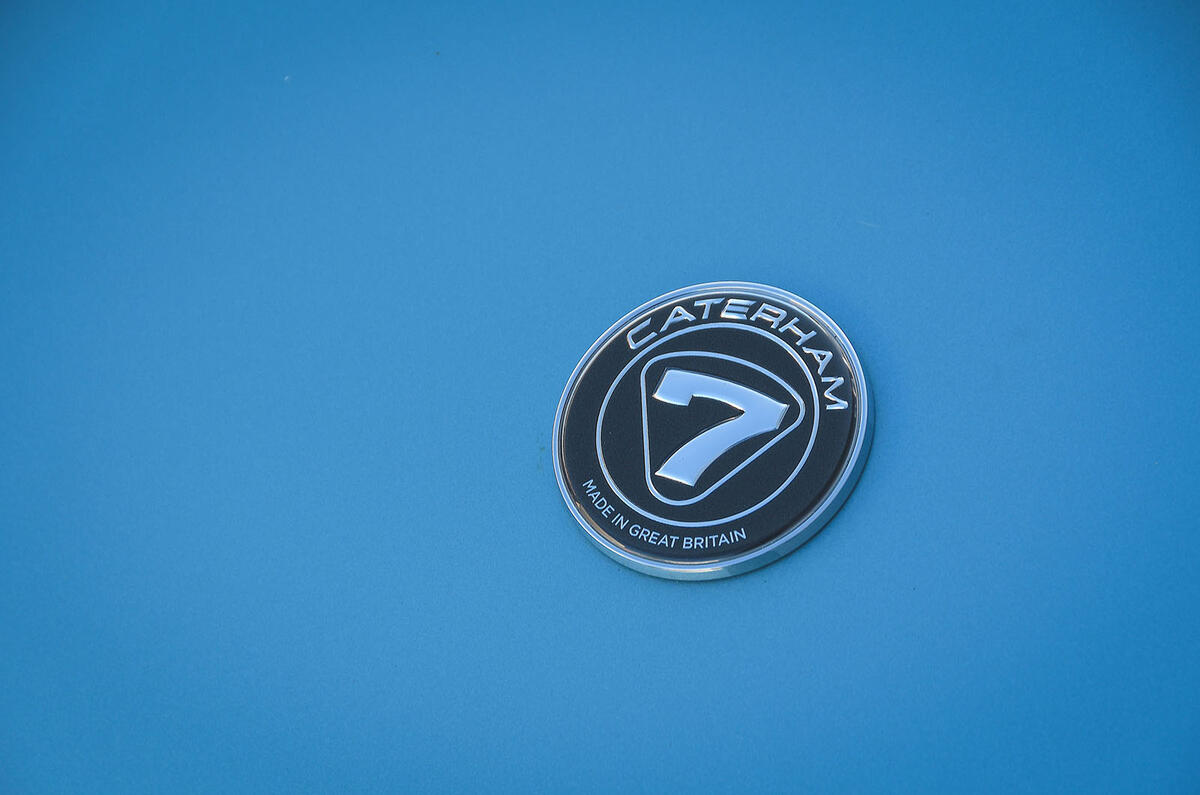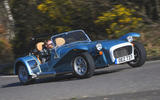What is it?
If you’re currently staring out of your window at the blue skies and sunshine, itching to slide behind the wheel and go for a blast, we can help.
Instead of jumping on your favourite online shopping portal and ordering yourself something from Airfix, Lego or Tamiya as a temporary distraction, why not pick up the ultimate lockdown construction kit of them all: the new Caterham Super Seven 1600.
Indeed, you can still get Caterham to deliver an entire car in component form and with the right tools (handily available for £375 from Caterham), it’ll take around 80-100 hours to put together. Alternatively, those less au fait with the innards of a toolbox can spend another £2395 to get it built for them and delivered to their local dealer fully registered and ready to use on the road.
What exactly is a Super Seven? Following on from the raging success of the limited-run three-cylinder Sprint and Supersprint, this is another retro-themed Seven. This time the four-cylinder 270 is the base model, but you’ll find traditional flared front wings instead of wheel-hugging cycle-style items, a spare wheel on the back to highlight the fact that this is a retro-tourer rather than a modern racer, and a pair of K&N filters to enhance the induction bark from the twin-throttle bodies.
That retro-tourer feeling is cemented inside by leather seats (black as standard, with other shades available at a cost) and the option of a tiny, thin-rimmed wooden Moto-Lita steering wheel. You even get a choice of two chassis sizes: the original or an SV version that’s longer and wider to give larger individuals a bit more room.
Despite the Super Seven piling on a few pounds over the regular Seven 270, the tweaked 1.6-litre Ford Sigma engine can still propel the car from a standstill to 60mph in 5.0sec, even though its naturally aspirated status means it delivers a mere 135bhp at a heady 6800rpm. Compared with the rather breathless Suzuki turbo triple found in the Sprint, it’s also a far more enjoyable engine to interact with.




































Join the debate
Add your comment
Yep £40K is a bit silly. I
Yep £40K is a bit silly. I get the purity and simplicity, and that does work with a high-price when you go down the performance route (600R etc) but this should be 30K tops.
40K, really!!
I suppose this would be much more sought after below 30K, 40K is simply insane for such a basic car
i just don't get it
it's twice the price that the 160 was, more expensive than better specced caterhams are, and those front wings are really draggy and lifty. i can't work out why someone would choose it. Is it really too hard to get a daihatsu copen or honda s660 engine to fit the type 9 gearbox? if they made the 160 again - but did it properly this time - i'm convinced they'd sell plenty of them